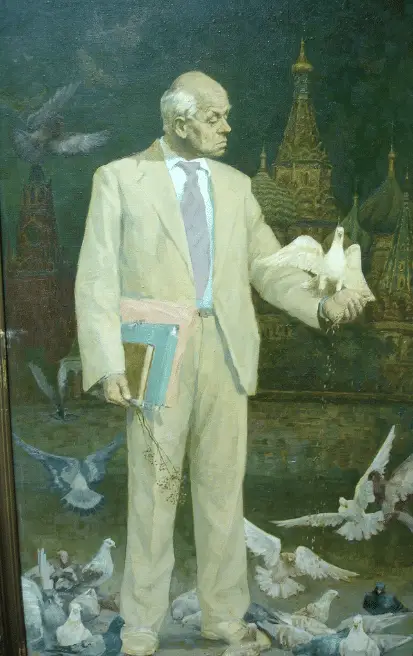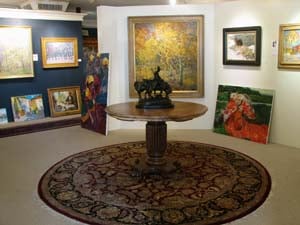The catalyst for what is now Gallery Russia in Scottsdale, Ariz., came at a pivotal time in 1992. Father and son co-owners Scott and Paul Eubanks say that after the collapse of the Soviet Union, Westerners were more curious than ever to learn about their Cold War rival — creating an opportunity to explore that interest through the artwork of the former USSR. “Everyone was blown away by the quality of the work, the historical significance and the potential it offered collectors,” says Scott Eubanks.
That year, the father and son team learned of a Russian couple looking to sell artwork in an effort to finance their move to the United States. That transaction led to nine years of buying Soviet-era artwork and reselling it to private clients. It wasn’t until 2002, however, that the two opened the “Gallery Russia” retail space among several other art hubs in Scottsdale’s ”gallery row.”
The gallery’s focus is on works out of the 15 former Soviet Republics, especially Ukraine and the Baltic States. According to the owners, the western art market was especially interested in works from the former USSR after its collapse, but the interest and effort in carrying those works didn’t last long, in part due to the expertise required in showcasing them. By focusing on one region, Scott and Paul Eubanks hope Gallery Russia can provide a space to highlight these works by utilizing the expertise they’ve developed over the past 20 years.
Half of the works in the gallery are from Soviet-era painters and were completed sometime after 1940. The other half are from more contemporary artists, generally born after 1960 and living today in the former USSR or in the United States.

The Eubanks say one of the highlights of their collection was a series of anti-Soviet paintings by Ukraine’s Boris Spornikov (1930-2005). The paintings were never exhibited until the collapse of the Soviet Union. “Each painting was a masterwork depicting such themes as famous Soviet citizens persecuted or killed by the Soviets, such as (Andrei) Sakharov and (Aleksandr) Solzhenitsyn,” says Scott Eubanks. “They were dark and moody and living history – not for everyone’s wall above the fireplace.”
In Spornikov’s painting of Soviet-nuclear-physicist-turned-dissident-political-activist Sakharov, the scientist stands with notebooks under one arm and with bird feed in another, attracting a flock while standing against a darkened Kremlin. The Kiev-born artist painted in a socialist realism style and, in addition to having prominent Soviet citizens as his subjects, he also painted portraits of oil workers and scenes from collective farms.
Visitors to Gallery Russia can find a mix of figurative work, still life compositions and plenty of landscapes familiar to Russia and other former Soviet republics. You can view virtual catalogs of works featured at the Gallery Russia here. The retail gallery is free and open to the public Monday through Saturday from 10 a.m. to 5:30 p.m. and is located at 7103 East Main Street in Scottsdale, Ariz.







